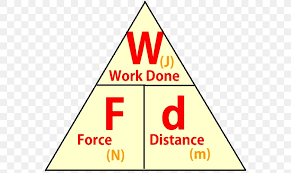Energy and Heat
1/33
There's no tags or description
Looks like no tags are added yet.
Name | Mastery | Learn | Test | Matching | Spaced |
|---|
No study sessions yet.
34 Terms
Energy
Energy is a quantity that causes something to happen. Energy can be stored, transformed or transferred, but cannot be created or destroyed
7 Forms of Energy - with examples
Energy can either be stores as Potential Energy or can be in a form of motion - Kinetic energy
Kinetic Energy - Moving Car
Gravitational Potential - Plane
Chemical Energy - Gasoline
Elastic Energy - Stretched Rubber band
Nuclear Energy - Nuclear Reactor
Electrostatic Energy - Charged Balloon
Thermal Energy - Hot coffee
Energy Transfers
Energy is transferred between stores through different energy transfer pathways
Examples:
Heat Transfer: A stove burner transferring heat to a pot of water.
Conservation of Energy
In any Energy transfer, the total amount of energy before and after the transfer is constant(energy can’t be destroyed or created). In most energy transfers more than one type of energy is produced. This often means that energy is wasted- not all the energy is transferred to the useful form.
Wasted Energy- wasted in which 2 main ways?
Energy is normally wasted in two main ways: Heat- eg: Bulb, Sound- eg: Fans
The wasted energy is transferred to a form that is not useful, eg: laptop heat
Energy Efficiency -formula
Efficiency refers to how much energy is transfer - not how quickly
Efficiency = (Useful Energy Output / Total Energy Input) x 100%. - for the efficiency as a percentage

Kinetic Energy
Kinetic Energy is basically movement energy
Energy is Measure in Joules(J)
where m is mass, v is velocity.
Formula: KE = 1/2 x m x v²
Gravitational Potential Energy - Formula
Formula: Mass x field strength x change in height
Work
Mechanical and electrical work done is equal to the energy transferred
The force must be in the same direction as the distance moved
Formula : Work = force x distance moved

Power
Power is the work done per unit of time and also as energy transferred per unit of time
Formula:

How forms of energy be obtained from fossil fuels
Fossil fuels are hydrocarbons compounds of hydrogen and carbon. When they are burnt, they combine with oxygen from the air and energy is released as heat
How forms of energy be obtained from Water-tides
Most of the energy of winds is transferred to the sea as wave, which are formed by friction between the wind and the water, the kinetic energy of the waves can turn a turbine to generate electricity
How forms of energy be obtained from Geothermal Resources
The interior of the Earth is hot. Hot rock if found at a shallow depth below Earths surface. They’re hot due to the radioactive substances. Water is pumped down to the hot rock where it boils, and high pressure steam returns where it can be used to make electricity
How forms of energy be obtained from Nuclear Fuels
Inside a nuclear reactor a fast decay of radioactive materials such as uranium. Release the energy they store this is called nuclear fission
How forms of energy be obtained from heat and light energy from the sun
The sun rays shine on solar panels, the solar cells absorb the energy of the rays, and electricity is produced
How forms of energy be obtained from Wind energy
The sun heats ups some parts of the atmosphere more than others. Heated air expands and starts to move around- this is a convection current. This is the origin of winds
A wind turbine converts the kinetic energy of moving air (wind) into electrical energy
Advantages of Solar
Renewables
Useful in remote locations
no fuel costs
Disadvantages of Solar
Unreliable - Sunlight can drop
Expensive
Advantages of Nuclear
Provides lots of energy from small mass of fuel
Disadvtages of Nuclear
Not renewable
Waste is radioactive
Advantages of Fossil Fuels
Produce a large amount of energy
Disadvantages of Fossil Fuels
Not Renewable
Releases Carbon Dioxide
Advantages of Hydro
Renewable
Safe, Clean
Disadvantages of Hydro
Expensive
Advantages of Wind
Renewable
Disadvantages of Wind
Unreliable- Speed of wind can change
Expensive
Advantages of Geothermal
Renewable
Disadvantages of Geothermal
Only available in a few places on Earth
Using Energy resources of Generate Electricity - Thermal into electricity
The thermal energy produced when fossil fuels are burnt or when nuclear fission takes place is used to heat water in a boiler to form steam. The steam turns the blades of a turbine, transferring thermal energy into kinetic energy. The turbine is linked by an axle to a generator where a voltage is induced in conducting wires when they move in a magnetic field.
Those energy resources that do not use a fuel, such as wind, waves and tides, will not need a boiler,
Pressure of a gas
Pressure of a gas is the force exerted by particles colliding with surfaces, creating a force per unit squared
Particles effect on pressure of gas when temperature changes
If the temperature of the gas is increased, particle will move faster and therefore more collision so the gas will exert a higher pressure
When temperature is decreased pressure decreases
Particles effect on pressure of gas when volume of container changes
When the volume of the container Decreases the. the gas is compressed into a smaller volume, the number of gas particles hitting the sides of the container will increase therefore the pressure increases.
If the pressure Increases the pressure decreasesj
Evaporation
Evaporation is the escape of more energetic molecules from the surface of a liquid
Evaporation causes cooling of a liquid
Evaporation causes cooling of a liquid